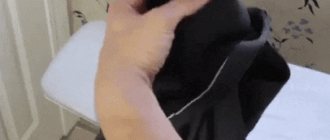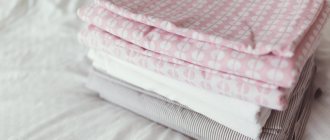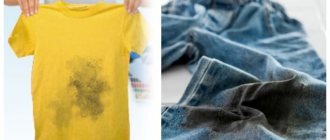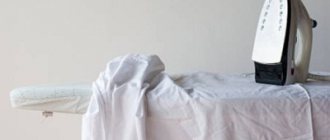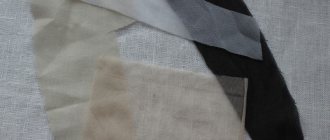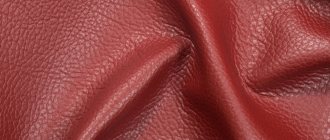Modern technology has made the ironing process much easier.
But, it is important not only to iron the fabric, but also to follow simple but useful recommendations that will save time and not cause harm to the clothes. There are many interesting secrets that, when applied in practice, can extend the life of linen and even give old wardrobe items a new shine and well-groomed look.
Basic methods
It doesn’t matter what household appliance the housewife uses for ironing, the main thing is to follow some rules and the ironing process will be significantly simplified.
To give products a neat appearance, one of the following methods is used:
- Dry. Garments are ironed from the face or back.
- Wet. Eliminating creases using this method is quite simple.
- With steam mode . The best solution for stale, heavily wrinkled wardrobe items.
Not all things can be steamed, so as not to cause harm to them. It is better to check how they react to the chosen ironing method on an inconspicuous area of the fabric.
Preparing laundry: at what temperature and in what mode should you iron?
It will only take 10-15 minutes to prepare, but it will save more effort and time. First you need to carefully read the information on the tag. It indicates the possibility of using steam and temperature.
Below you can see the ironing icons :
- Ironing and steaming of products is permitted.
- Recommended mode 110℃.
- It is allowed to use medium mode up to 150℃.
- It is acceptable to use an iron heated to 200℃.
- Do not steam, take it to dry cleaning.
- Do not iron.
For clarity, the icons are shown in the photo below:
If there is no label, then you need to choose a mode depending on the composition of the fabric:
- flax – 190-230℃;
- cotton products – 165-190℃;
- woolen items – minimum temperature – 140, maximum – 165℃;
- pure silk – 115-140℃;
- items made of viscose – from 85 to 115℃.
If the laundry is wet and the iron is not hot enough, yellow spots will appear on it. You should also not allow the fabric to become too dry; ironing it is very difficult. The material should be slightly damp.
How to iron clothes correctly?
Sort clothes into separate piles depending on the recommended temperature ℃. This is necessary so as not to constantly switch the thermostat. The soleplate of the iron should be clean, as should the steam chamber.
Simple instructions for ironing clothes:
It is better to pass clothes from the inside out.- When ironing from the face, it is better to use gauze or cotton cloth soaked in water.
- Plain water is suitable for hydration.
- Clothes are laid out carefully so that there are no folds or creases.
- The light should fall from the left side - for a right-handed person.
- It is better to carefully fold sheets and duvet covers into 4 folds to avoid distortions and iron them away from the face.
- The iron is moved away from you, this will prevent burns.
- To prevent the seams from being imprinted on the face, it is better to place thin cardboard between them; the same applies to pockets.
- Iron clothes along the main line, even if the item is cut on the bias.
- Products are smoothed from top to bottom to avoid deformation.
- First, small parts of clothing are processed.
- Thick areas are carefully ironed through gauze.
- If there is lint, iron it in its direction.
Workplace organization
Before you get started, it's worth spending a little time on some preliminary preparation. This will save time and effort in the future.
- The surface of the ironing board should approximately be located at a height equal to the distance from the person’s elbow to the floor. Using smooth and multi-stage height adjustment, you can find a comfortable level for yourself. If you can adjust the position of the board, you can iron things not while standing, but while sitting on a sofa or chair.
- The soleplate of the iron and the steam chamber must be clean. The reservoir should be filled with filtered or boiled water.
- The work surface should be well lit. During the day, the board can be placed closer to the window.
- A stationary work place significantly saves time using folding and retractable boards, which do not need to be moved to the work area from the place of permanent storage each time.
- It is more convenient to use a large ironing board.
- The socket, if it is not built into the ironing board, should be conveniently located, and the cord should not interfere with operation.
- It is advisable to have a place where to put already ironed items and where to place a hot iron.
- The work surface must be safe and stable.
- The cover on the board should be soft, firmly and securely fastened, and not move when ironing along with the fabric. It's inconvenient, constantly distracting and slows down your work.
- Before starting work, clothes must be sorted into separate piles depending on the recommended ironing temperature. This way you won’t have to constantly change the temperature and switch the thermostat.
- It is advisable to prepare clothes hangers in advance.
- To prevent ironing from seeming so monotonous and tedious, you can do it while listening to music or in front of the TV.
If there is a lot of laundry, but, on the contrary, there is very little time, you can compromise and come to an agreement with yourself - first of all, iron the things that are needed. Everything else can be put aside for a while or you can skip this stage of caring for clothes altogether - carefully roll everything up after drying and put it in the closet.
Features for different types of fabrics
Before ironing the product, you should carefully study the information on the tag. If it is not there, then you can use simple rules for caring for certain types of fabrics:
Viscose. You need to pass the iron over the material from the wrong side.
Before work, carefully straighten the clothes to avoid wrinkles. Do not leave the iron on an uneven surface, as this may damage the material. It is recommended to iron through damp gauze or cotton cloth.- Linen and cotton .
Products are ironed from the inside out. It is better to wrap linen or cotton clothes in a wet cloth and leave for half an hour. Treat the surface through gauze. It is better to use the steam function without overheating the iron to a temperature above 200 °C. For thin 100% cotton, a temperature of 160-180 °C is suitable. - Fatin. The main thing is that the product must be washed correctly, the recommended spin is 500 rpm. It is difficult to iron a thing with a simple iron. A dense material is placed under the fabric, with cotton fabric or gauze on top. Choose the minimum t °C, otherwise the clothes will turn yellow. You can use the steam function, which straightens the item without deforming it.
- Velvet and corduroy products . In the second case, steam is used. Velvet items are ironed from the inside out through cotton fabric. It is better to place a terry towel of small thickness on the ironing board. This preserves the appearance of the clothes. Iron corduroy and velvet at low temperature.
- Jack. First, iron the item off your face. There should be no creases on the reverse side. It is very difficult to eliminate them. Fold the product in half, facing inward. Treat on one side, then on the other at a temperature of t °C 200-210.
- Synthetics. Practical, popular fabric. You can iron such products by following the recommendations indicated on the label: ironing and washing mode. Most often, low or medium temperature is used. Products are processed from the inside out through gauze or cotton fabric.
- Veil. Before you start working, it is better to apply gauze to your clothes. Without cotton fabric, ironing the product should not be done. It is also impossible to linger in one place - you can damage the material. The iron must be moved quickly and carefully. Steam use is also not recommended.
Knitwear. Knitted items may become deformed after washing.
Iron from the inside out, the fabric should be damp. It is better to move the device carefully over the material. Ironed clothes should be left on the ironing board to cool and dry thoroughly.- Capron. You can iron it, but only at a low temperature of 110°C. If your device doesn't have a gentle mode, it won't work. Align the nylon well on the board, put cotton fabric on top. The more delicate the item, the thicker the padding should be. The steam function cannot be used.
- Satin. It is recommended to treat the product from the face. Set the mode to 200°C. For effective ironing, you can use a steamer. But the fabric itself needs to be dried well. Wet material will stretch and deform. Additional fabric pads, gauze is not used.
- Atlas. Products quickly wrinkle and become deformed. They should be a little damp. Temperature range 140-150°C. The regulator should be set to “silk” mode. It is better to treat the surface from the inside out through cotton fabric. Move the device quickly, without holding it in one position, otherwise the structure of the fibers will be disrupted.
- Tulle. Recommended temperature 120°C. Most curtains can be steamed. If there is no such function, place a damp cloth on the ironer. Read more here.
- Organza. Place gauze under the material. Set the minimum temperature. You can use the steam function. You can find detailed information here.
- Polyester. Iron from the inside out through moistened gauze. If the item remains wrinkled on the front side, you will have to go over it too. Temperature 120-130°C. Read more here.
Leatherette. When ironing, the areas should not touch.
It is better to place a roller in the sleeve. Treat the surface from the wrong side through gauze. The temperature is minimal, steam cannot be used. Read more here.- Leather. Temperature range 110-140°C. First straighten the product well. Read more here.
- Silk. Select a mode with the same name. Place moistened gauze on the front side (if the product is completely dry). The steam mode cannot be turned on. Read more here.
Not all linen and cotton fabrics are natural . Manufacturers often add synthetic fibers, which reduce the cost of products; they are ironed at lower temperatures and wrinkle less. To avoid damaging your clothing, you should read the fabric composition on the label.
Why use gauze when ironing
Ironing some fabrics requires the use of additional materials: gauze or other material.
Gauze or cotton cloth soaked in water is used as a protective layer for very thin fabrics that cannot be ironed at high temperatures. For example, the permissible temperature for chiffon is 60 °C. Typically, the minimum setting on the iron regulator is 100 °C.
Iron very dry clothes through damp gauze if the iron does not have a steam function.
The fabric is used for ironing dark clothes so that shiny shiny stains from the iron do not remain on them. If streaks (shiny areas on clothing) do appear, they can be removed by wiping with a wet cloth.
It is convenient to iron thick areas of clothing through gauze and steam out folds. If you soak a fabric in a vinegar solution (1 tablespoon per liter of water), wring it out, lay it over the folds, you can iron creases on dress pants or hard folds that will retain their shape for a long time.
The purpose of gauze, why and when is it recommended to be used?
Thin cotton fabric is the best way to protect shiny and delicate products. It is recommended to use gauze for ironing dark clothes that show streaks after ironing.
There are very thin materials that are susceptible to high temperatures. On some device models, the minimum mode is 100°C, and for chiffon only 60°C is suitable. This is where gauze will come to the rescue and serve as a barrier.
A few tips on how to properly use cotton fabric:
- If the item has dried, it is recommended to pre-moisten the cushioning material.
- It is good to steam the folds through gauze.
- To give clothes a bright color, gauze fabric can be slightly soaked in vinegar.
Before moving on to another piece of clothing, you should check how the material has been ironed under the cotton fabric.
Special cases
Often there are elements on clothes that are difficult to iron. Proven methods come to the rescue.
Lantern sleeve
A damp towel is placed inside and folded into a ball to get as close to the size of the flashlight as possible. Use a hot iron to smooth out all wrinkles. You can use a steam generator that can handle any creases. If you don’t have either one or the other at hand, a hairdryer will come to the rescue, just pre-wet the fabric. She is blown with hot air.
Folds and pleats
The product is laid out on an ironing board, each fold is straightened out. A damp cloth is placed on top, and the iron is set to the appropriate temperature for the material. You need to iron every fold. When using special crease removers, iron from the inside out.
The top of the item can be treated with a vinegar solution so that it does not wrinkle for a long time.
Embroidery
The easiest way is to steam a washed item. If you don't have a steamer, you can do this with an iron on low heat. To maintain volume, ironing should be done on a soft surface from the back. When you have to iron from the front side, gauze is applied to the embroidery. Silk threads are ironed dry, beads are only steamed.
Lace
Such products should be ironed with starch. The lace is ironed with care, all folds are smoothed out with the tip of the iron. Openwork cotton clothes are ironed from the back through wet gauze, but ironing silk clothes is not recommended.
Is it possible to iron without an iron?
You can make things look well-groomed in different ways. Even a high-quality iron can fail at the most crucial moment, so it is important to know alternative methods on how to iron things without an iron:
a bathtub filled with hot water;- moistened terry towels: lay clothes on one, straighten, cover with the other;
- boiling kettle: the item is ironed with steam;
- vinegar and water: spray the product well;
- hair dryer: clothes are moistened, smoothed, then dried;
- An iron is an ideal tool for ironing collars.
The ironing cabinet can handle any material. It will help get rid of even large creases, stretch the product after washing, and create creases in trousers. Such devices allow you to iron curtains and outerwear while hanging, eliminating the appearance of wrinkles.
How to iron a shirt without an iron?
Hot iron mug
A mug or any pan is suitable for ironing. The larger the diameter, the more surface it will cover at one time. A kettle that boils water on the stove is also suitable.
It is necessary to pour hot water into a metal container and run it over the fabric. This method is still suitable today, it is simple and fast. The bottom of the container must be clean, otherwise it will contaminate the shirt.
Video example of ironing using a pan of hot water:
Steam in the bathroom
For this time you need a reserve of about 20-30 minutes. Fill a bath with hot water and hang a shirt over it on hangers.
The steam will straighten the folds, the fabric will stretch and after 20 minutes it will be “ironed”.
You can't put the shirt on right away. You need to remove it from the bathroom and let it dry.
It should be taken into account that this method requires a large volume of water, which imposes additional costs.
Steam from a boiling kettle
Boil a kettle and place a wrinkled shirt under the steam from the spout. Proceed with caution to avoid getting burned.
Self-smoothing solution
- Dissolve a little vinegar and fabric softener in water. Mix and pour the resulting solution into a spray bottle. The solution does not leave stains on fabric.
- Moisten a neatly laid out shirt with the solution and wait for it to dry. The wrinkles will be smoothed out and the clothes will look neat.
Water and hairdryer
Spray the fabric with plain water and dry with a hairdryer. The effect is less noticeable than after a vinegar solution, but it will be noticeable.
Stretching and pressing
This method takes a long time.
- You need to carefully lay the shirt down and straighten out every fold.
- Place a heavy and large object on top so that its surface completely covers the clothing. For example, a mattress so that the clothes are under the sleeping person all night. The effect will be enhanced if you spray the shirt with a vinegar solution or plain water before doing this.
Wet towel
- Wet a terry towel and squeeze thoroughly.
- Spread it on a flat surface (floor, table, bed). Place the shirt on top and carefully straighten out the folds. When exposed to moisture, the fabric will smooth out.
This process requires one to two hours. The shirt will be ironed, but very damp. You will need to dry it on hangers in a well-ventilated area.
This method is suitable for clothes made of wool, cotton and synthetics.
Hair straightener
- Clean the inside of the tongs to prevent stains from appearing on the fabric.
- Heat the device to a high temperature and, holding the shirt with it, move it from top to bottom.
It is convenient if the shirt hangs on hangers, and not lie horizontally.
It is easy to iron the sleeves, collar and bottom edge of clothing, but it will be difficult to straighten other, larger and wider areas. For larger surfaces, you can use a pan of hot water. This method is suitable for smoothing out individual large folds.
How to iron with a light bulb?
Similar to using hot iron cookware. Option for using the light bulb:
Option 1
- unscrew the hot light bulb with your hand wrapped in a towel
- move it over the fabric instead of an iron
Option 2
- lift clothes to the lamp
- vigorously move the clothes over it.
The wrong side of the shirt should be in contact with the light bulb. This will protect it from stains. Before ironing, wipe the lamp with a damp cloth to remove accumulated dust.
The warmth of your body
If you put a wet item on yourself, the body heat will smooth out the creases. This is not the most pleasant method, but it is effective.
If you first spray the fabric with a vinegar solution, the result will be improved. True, you will have to inhale vinegar fumes, which is unpleasant and not very useful.
Useful video reviewing ironing without an iron:
Secrets for different wardrobe items
Not all clothing items are cared for equally . Each thing requires a separate approach. To get the maximum effect from your work, you need to follow simple rules.
| Wardrobe item | Some useful tips |
| Trousers | From the wrong side, iron folds, pockets, seams. Turn the trousers inside out and iron the top, waistband, inside, then outside. |
| Jeans | Most often, such products are simply straightened after washing to maintain their original appearance. If you need to go through the iron, you need to do it from the inside out. |
| Coat | Such wardrobe items cannot be ironed. They need to be steamed by weight. |
| Cloak | The processing method depends on the fabric. The raincoat is ironed from the inside and then from the outside. |
| Blazer | Iron the lining on the sleeves, then the sleeves themselves using a special board. Next is the back, floors, collar, lining and sides of the product. |
| Kids' things | Iron from the inside at maximum temperature. |
| Skirts | First iron the back side, then the face. Pull the lining out, iron the panels as usual using cotton fabric. |
| Shirts | You need to start with the sleeves. The cuffs are ironed from the inside, then the collar, the top of the back, and the front of the product. |
| Bed dress | Fold the product 4 times. The fabric should be damp. The temperature depends on the material. |
| Jacket | Turn inside out, select “silk” mode. To avoid damaging the fabric, use gauze. |
| Curtains and drapes | Products are ironed wet at a temperature of 110-130 degrees. Quick, careful movements. |
| Cap | Moisten the baseball cap and put it on the frame. Straighten the fabric well. Leave until completely dry. |
| T-shirts | Iron small parts after the sleeve to create arrows on the bend. Iron the back and shelves. |
| Paper | Lay out well, cover with a cloth, select the minimum temperature. During the ironing process, gradually increase it. |
Here are simple tips for caring for things that will help you maintain the original appearance of your clothes and always look respectable.
Secrets of ironing warm clothes
It is not recommended to wash winter clothes; it is better to go to dry cleaning. But if washing and ironing cannot be avoided, you need to know the material from which the item is made.
Coat
If it is made of wool, it is ironed while not completely dry on the back side at a maximum temperature of 100°C. All seams are carefully ironed. The collar, lapels, as well as the outside are ironed through a wet fabric. For a drape coat, you can use steam, only the back of the product is placed on a soft surface.
Cloak
Leather products can only be ironed through additional fabric at the lowest temperature without steam. You can hold the item over a bath of hot water. Suede raincoats that cannot be ironed are also ironed. Cotton outerwear is ironed on both sides, including the lining.
If the item is made of polyester, you should iron it starting at a low temperature, gradually increasing it.
Bolognese jacket
It is necessary to iron it from the wrong side, placing a piece of damp gauze. You can use an iron with a steam function. After the jacket is turned inside out, the procedure is repeated. Before ironing, it is necessary to check the material for resistance to high temperatures.
How much does home service cost?
A popular service that allows you to give your product a well-groomed, pleasant look. Ironing is performed using special equipment that acts delicately on the material, eliminating unevenness and creases.
Specialists work individually:
- the degree of wear and structure of the material are assessed;
- the manufacturer's care advice is taken into account;
- the optimal temperature is selected.
The cost of professional ironing depends on the size, number of items, and type of material. The average price is 1700-2000 rubles.
Useful tips and advice
A few simple recommendations:
- The surface of the equipment must be clean.
- Only boiled water should be poured into the tank.
- It is better to purchase a large ironing iron.
- Before work, you should prepare hangers to hang clothes on.
- Treat stains remaining after ironing with peroxide.
- Glimpses can be removed with a simple wet cloth.
- Items that are not dry cannot be ironed; they will remain stained.
The iron should not be placed on the edge of the board. Do not check the heating level of the device with your finger. The cord should be put away so that it does not interfere with work.


